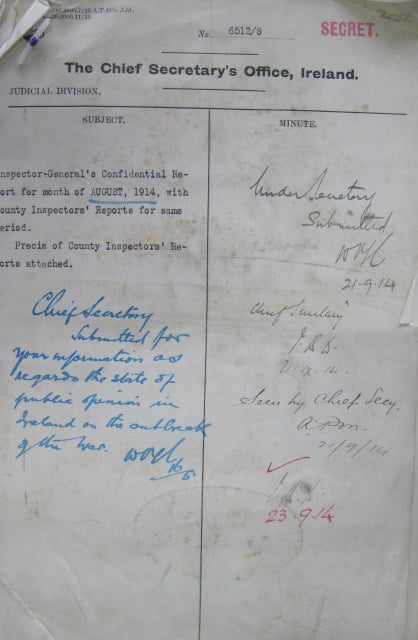First troops leave Dublin for war
Dublin, 9 August 1914 - Battalions of soldiers last night left Dublin for England and then for war.
A special steamer sailed from the North Wall bringing men from different companies and different regiments.
All week men who have been mobilised have been departing Dublin, with huge crowds turning out on the docks to bid farewell.
There were emotional scenes as women and children said goodbye to husbands, fathers and brothers.
Confidential RIC report into the state of the country in August 1914. The impression is that the political divisions are being overshadowed by the war and that many members of the both sets of Volunteers are being called to the colours. Click for full document. (Image: National Archives UK, CO904/94)
Stretches of the quays have been completely cleared for the embarkation of soldiers.
Everywhere are hung signs that read ‘To the Embarkation Quay’.
Following those signs are now constant streams of soldiers, sailors and reservists coming to offices.
Ships belonging to the London and North Western Railway and to the City of Dublin Company are being used for military purposes.
Normal passenger traffic between the North Wall, Kingstown, Greenore and Holyhead has been suspended at least until 10 August.
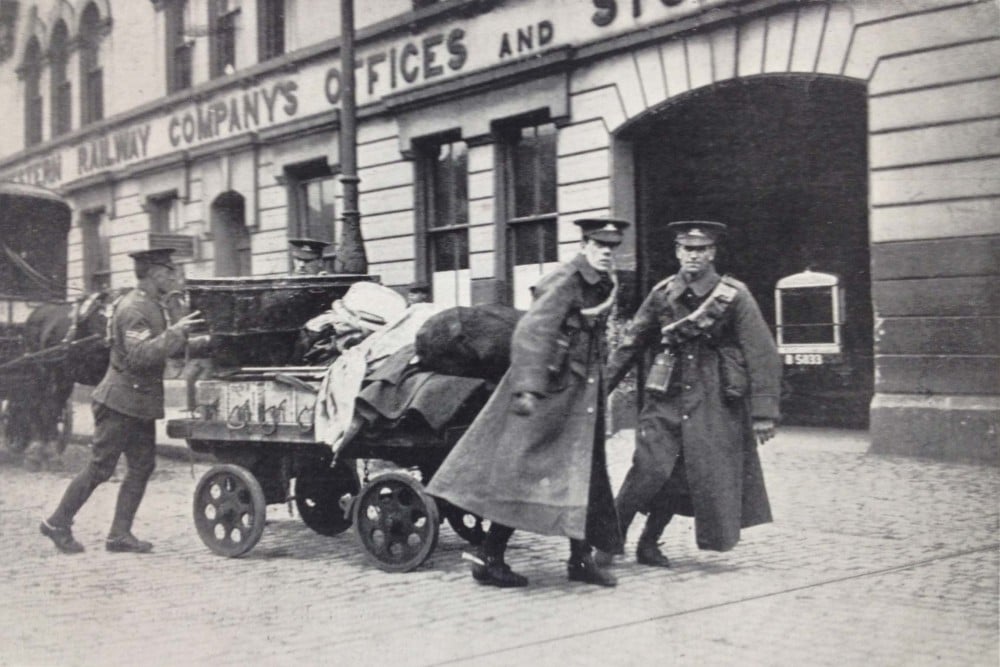
|
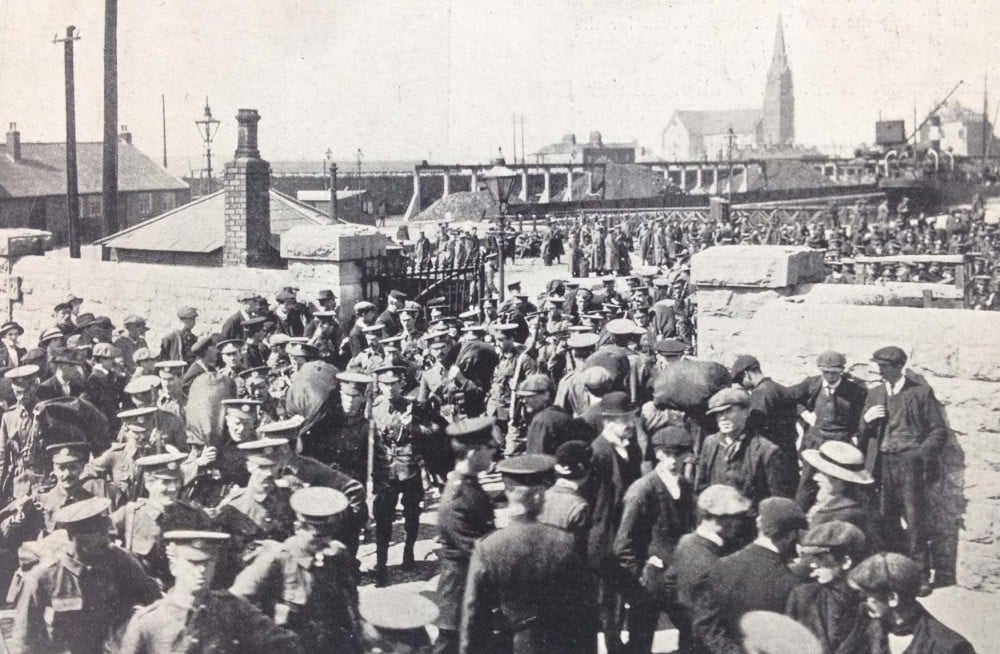
|
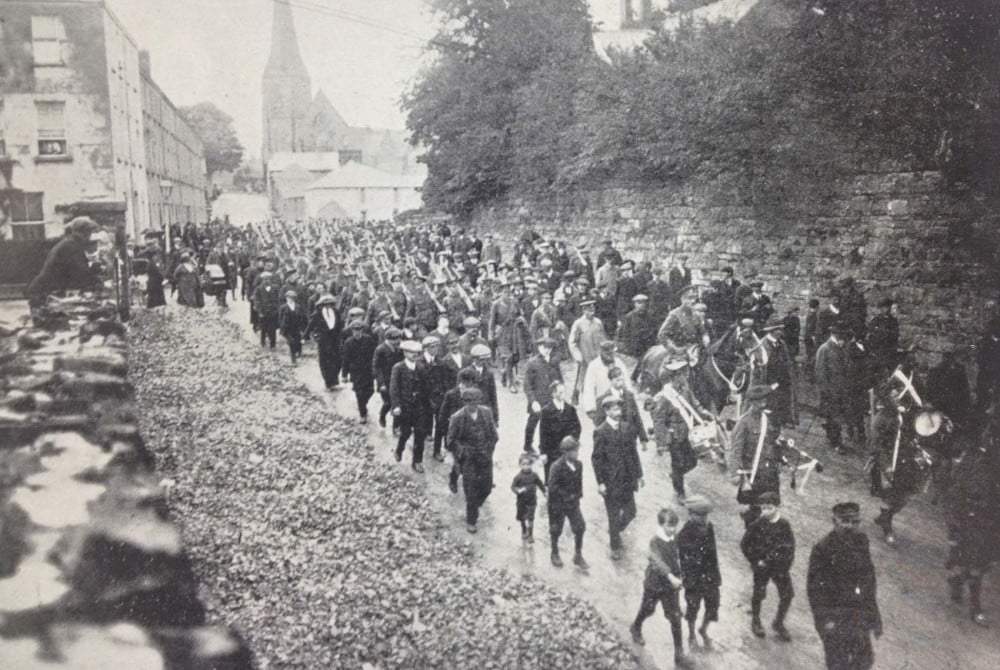
|
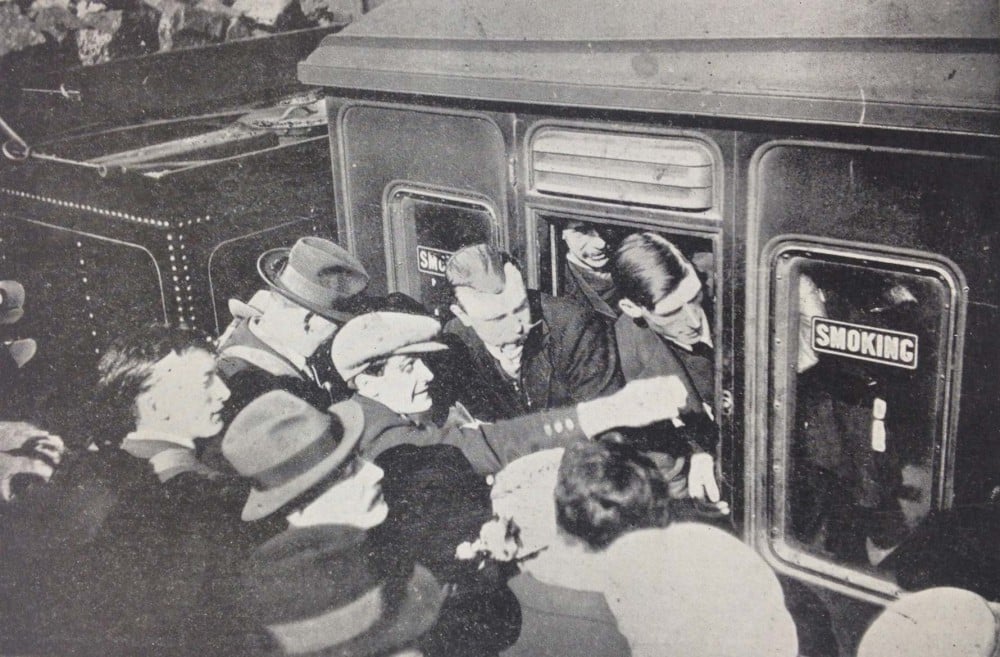
|
Clockwise from top left: a 'mixed load' consisting of ammunition boxes, officers' luggage and men's kits being readied for embarkation; reservists at Dublin's North Wall preparing to embark; a typical scene at railway stations around the country with reservists travelling from every town; a company and band of National Volunteers accompany soldiers to the railway station in Armagh and cheer them as they leave for the war. (Images: Irish Life, 14 August 1914. Full collection of Irish Life available from the National Library of Ireland)
Meanwhile, 350 officers and men of the Royal Irish Rifles under the command of Lieut. Col. McCammond left from Belfast.
Earlier in the afternoon a service was held at Belfast Cathedral when the colours of the Norfolk Regiment were placed in the custody of the Church authorities for the duration of the war.
Most of the leading military and political figures in the city attended the service. Ulster Volunteers had lined the streets leading to the Cathedral as a mark of honour.
Many thousands of soldiers are expected to leave from Dublin and Belfast over the next week.
[Editor's note: This is an article from Century Ireland, a fortnightly online newspaper, written from the perspective of a journalist 100 years ago, based on news reports of the time.]


